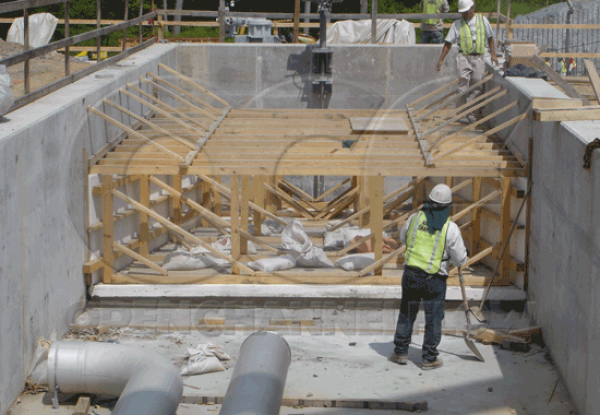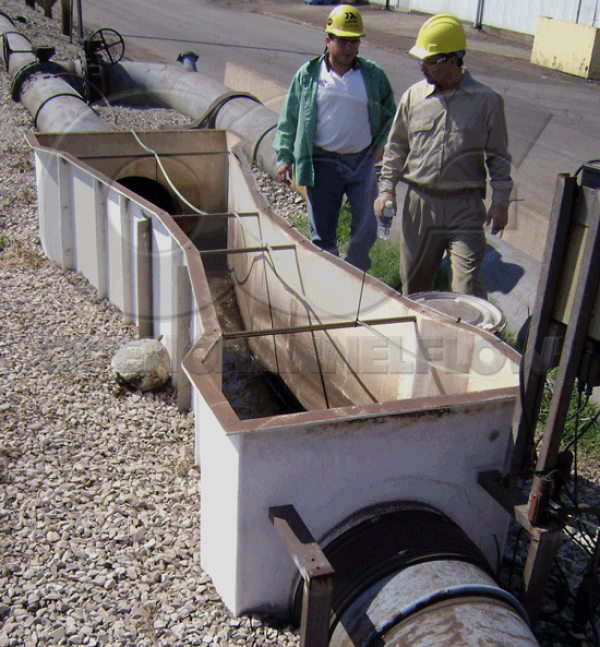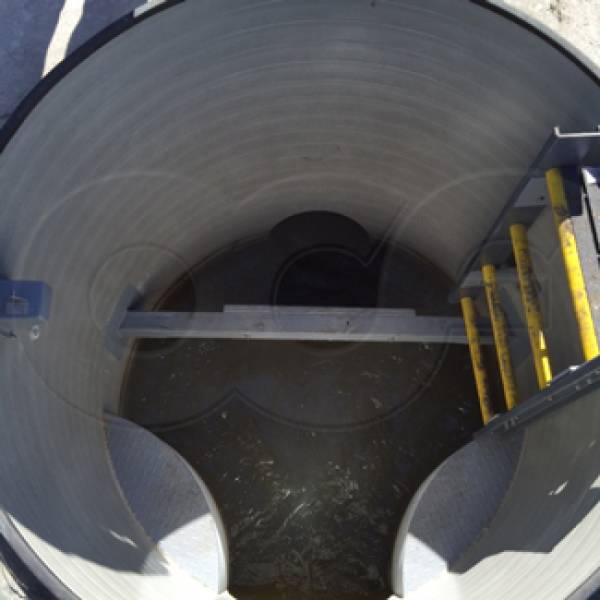This website uses a variety of cookies, which you consent to if you continue to use this site. You can read our Privacy Policy for
details about how these cookies are used, and to grant or withdraw your consent for certain types of cookies.
Upstream Conditions for Parshall Flumes
For a Parshall flume to function correctly it is important that certain guidelines be followed when selecting a site and installing the flume. In particular, the upstream conditions are of critical importance. It is tempting to say that there just isn’t room to position the flume, that you can cheat on the straight run upstream, etc. Unfortunately, poor upstream flow conditons can cause large flow measurement errors.
- To prevent wave formation and water surface instability, the Froude number should not exceed 0.5 for the full range of anticipated flows for 30 Ha uptream of the flume
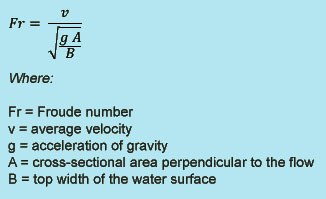
- Flow should be tranquil (fully developed flow in a long, straight, moderately smooth channel). As a general guideline, a straight upstream approach length of 10 to 20 times the control Parshall flumes's throat width will meet this entrance condition.
- Flow must be sub-critical. The Parshall flume operates by accelerating sub-critical flow to super-critical flow - allowing the use of a single level measurement upstream of the throat for determing the flow rate.
- Flow should be uniformly distributed across the channel. Poorly distributed flow can result in different level measurements as the flow is non-uniformly accelerated through the throat. The example below shows flow approaching a 120-inch [304.8 cm] Parshall flume where the upstream channel S-bend creates non-uniform flow distribution - as evidenced by the lack of turbulence in the right hand side of th throat. In addition, the right hand side is also experiencing super-critical flows. Both conditions were cured only after a velocity break (in this case a concrete lane divider) was placed upstream of the flume.

- The relatively free of turbulence, surging flow, waves, or surface boils
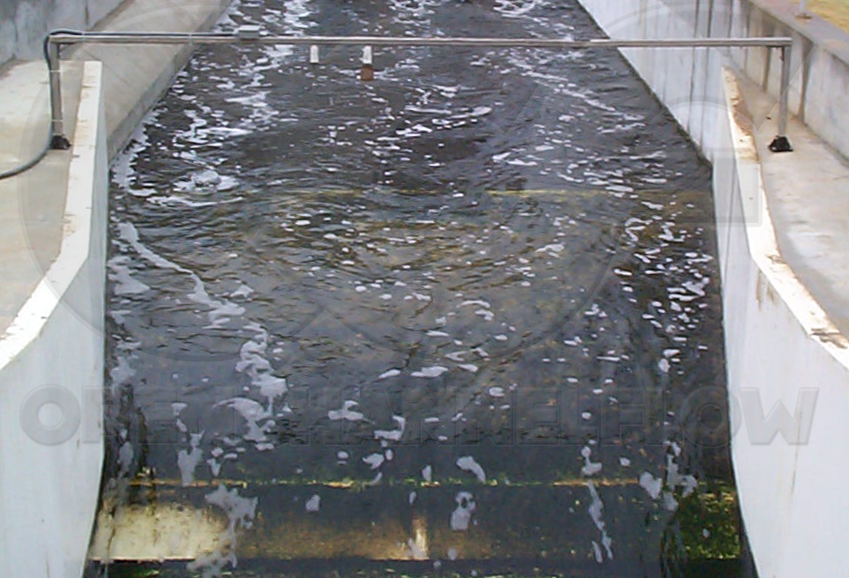
- There should be no bends immediately upstream
- Smooth and gradually converging side wing walls should be used to provide a smooth transition from the channel into the flume
- Upstream channel banks should be maintained so that excessive growth does not affect the approach velocities or velocity distribution
- Sidewalls and channel bottom should be tamped in place to prevent water from undermining the flume
- If the approach flow is supercritical, the upstream channel should be modified so that a hydraulic jump is formed at least 30 Ha uptream of the flume
- The need to accommodate the drop trough the throat of a Parshall flume creates a need to either modify the downstream hydraulics so that the flume is not submerged, or – more commonly – raise the flume above the channel floor. When setting a Parshall flume above the channel floor, a 1:4 sloped ramp should be formed smoothly transition flow into the flume. Failure to do so may result in turbulence as the flow rolls over the upstream edge of the flume’s floor. Also, when raising a flume above a channel’s floor, care should be taken to verify that flow will not overtop the usptream channel.
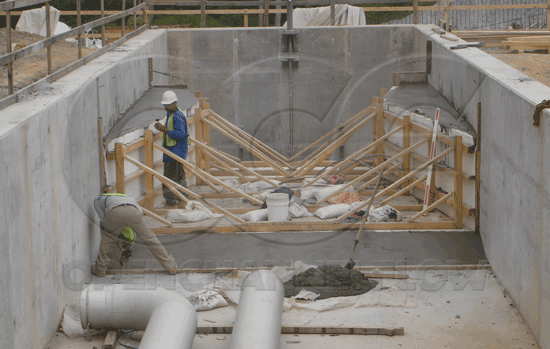
Related Blog Posts
Explore more insights in our blog.

LOCATIONS IN ATLANTA, GA & BOISE, ID



